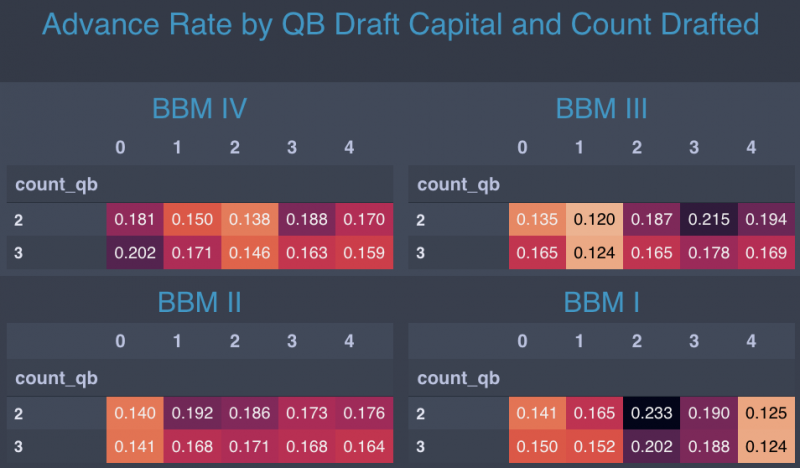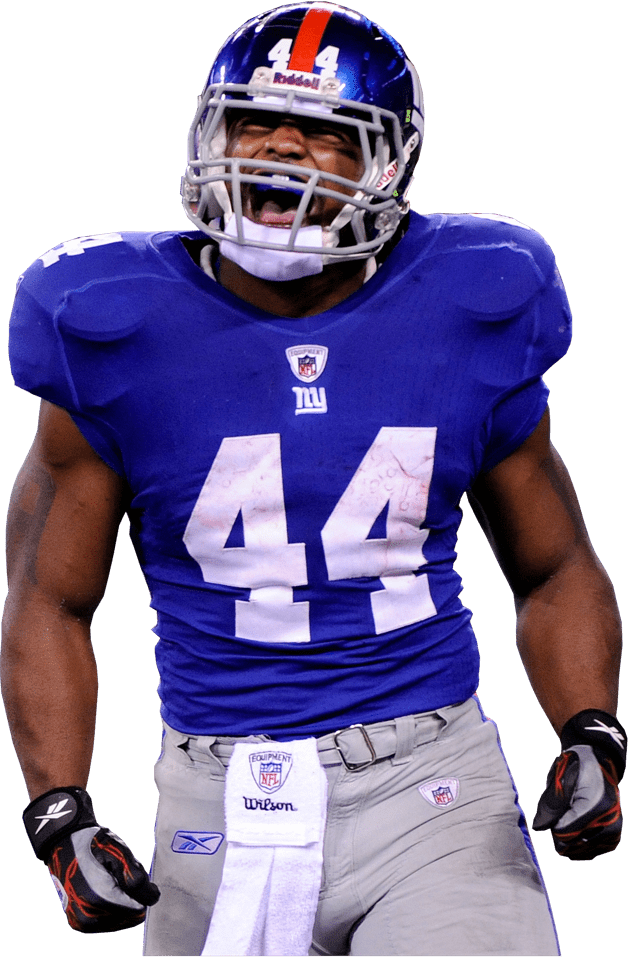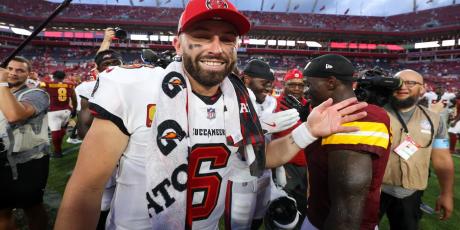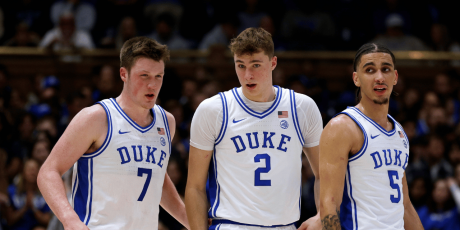How to Approach Quarterbacks in Best Ball

The quarterback market saw a major shake-up last year. While it was once considered a slappy move to take a quarterback in the second round, it became commonplace for Jalen Hurts and Josh Allen to land there. After an adequate but slightly disappointing season, ADP has regressed to the previous norm where QBs go a bit later.
Quarterback may be one of the easier positions to project at times, but the variance of projecting only 32 players can be quite high. Injury, offensive adjustments, and personnel adjustments can impact quarterbacks dramatically. Below I will dive into how quarterbacks have performed historically in best ball tournaments, the impact of spike weeks, and how that applies to the current landscape.
Historical Performance
Like tight end, a few quarterbacks can write the advancement matrixes themselves. Take BBM I for example, middle and slightly high quarterback investment crushed. Getting the Josh Allen break regularly in the 80s and 90s can skew the data for a year. Relying on back-end quarterbacks never proved fruitful until last year. Of course, C.J. Stroud plays a major role in this deviation. Pinning down the odds of players ascending can be difficult.

A late-round QB could break out every few years. Most years, this works out poorly, but when it hits it can smash. The players consistently finishing at the top of the position often rely considerably on their rushing production. Even when touchdowns are elusive, rushing yards can provide a meaningful floor to stabilize lineups. The years of near-zero correlation between ADP and end-of-season points are long gone. Some quarterbacks are a different breed than those that used to patrol the field on Sunday.

- All Premium Content
- The most Accurate Rankings Since 2010
- Expert Draft Picks w/DraftHero
- Highest Scoring Lineup + Top Available Players w/LeagueSync
- ...and much much more


















